00 Overview
project brief
This year, our team partnered with the Pacific Northwest National Laboratory (PNNL) to explore one of the most complex and pervasive issues of our time—misinformation on social platforms.
While the vast majority of platform users are concerned about the credibility of their engagement, they still unintentionally consume and spread misinformation. To address this, we created a human-AI collaborative system to foster new norms for platform design and user behavior to mitigate the spread of misinformation.
01 Solution
Fact-Checker
The Fact-Checker identifies claims and provides a summary of the facts to help platforms users quickly evaluate content credibility at different levels of depth.
Fact-check Indicators
Helps users quickly identify the credibility of claims in-feed

Fact-check Details
Pulls forward evidence from reputable sources to support the verdict
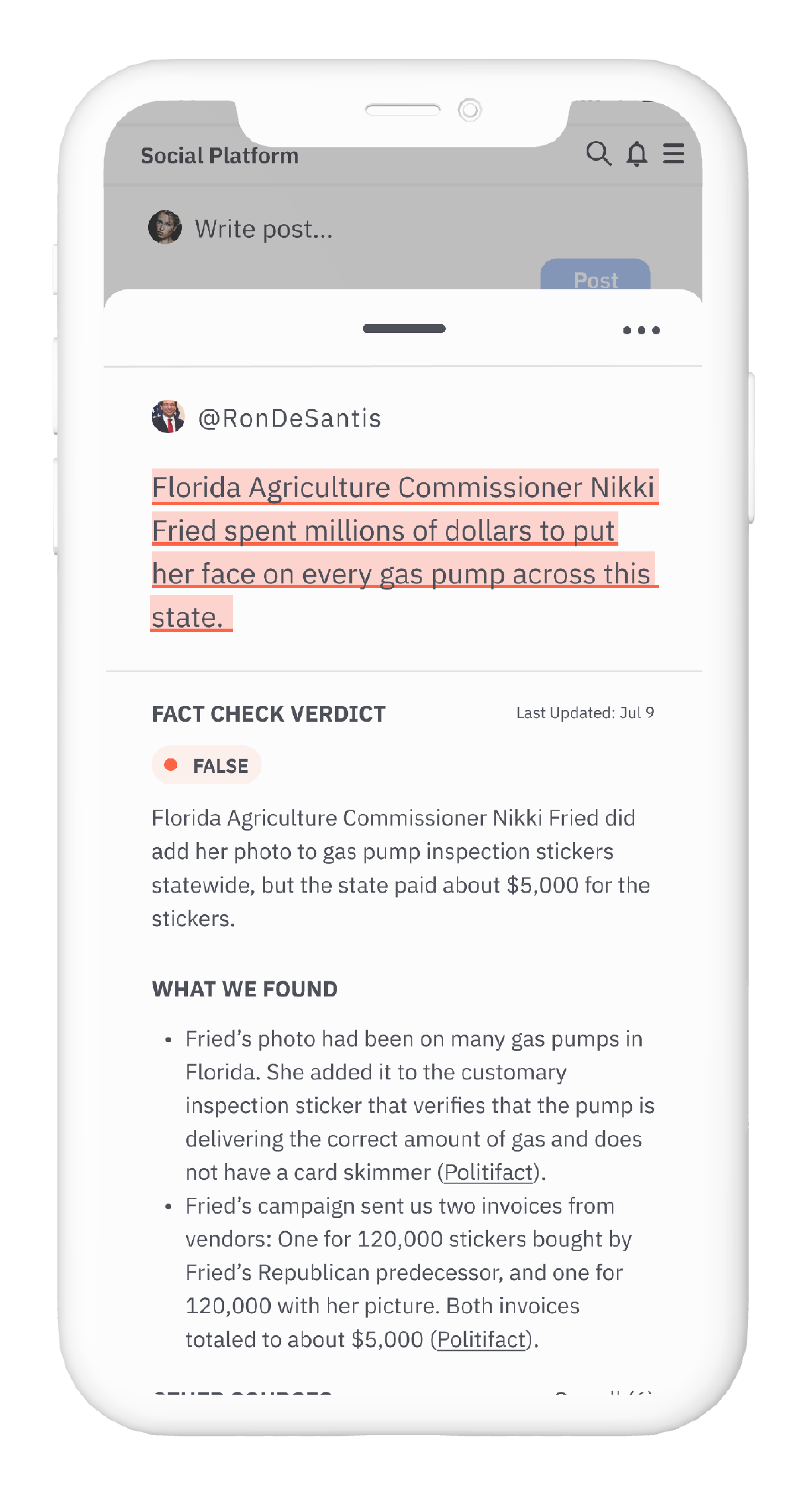
Preferred Sources
Takes user preferences into account when compiling facts and resources for fact-check details
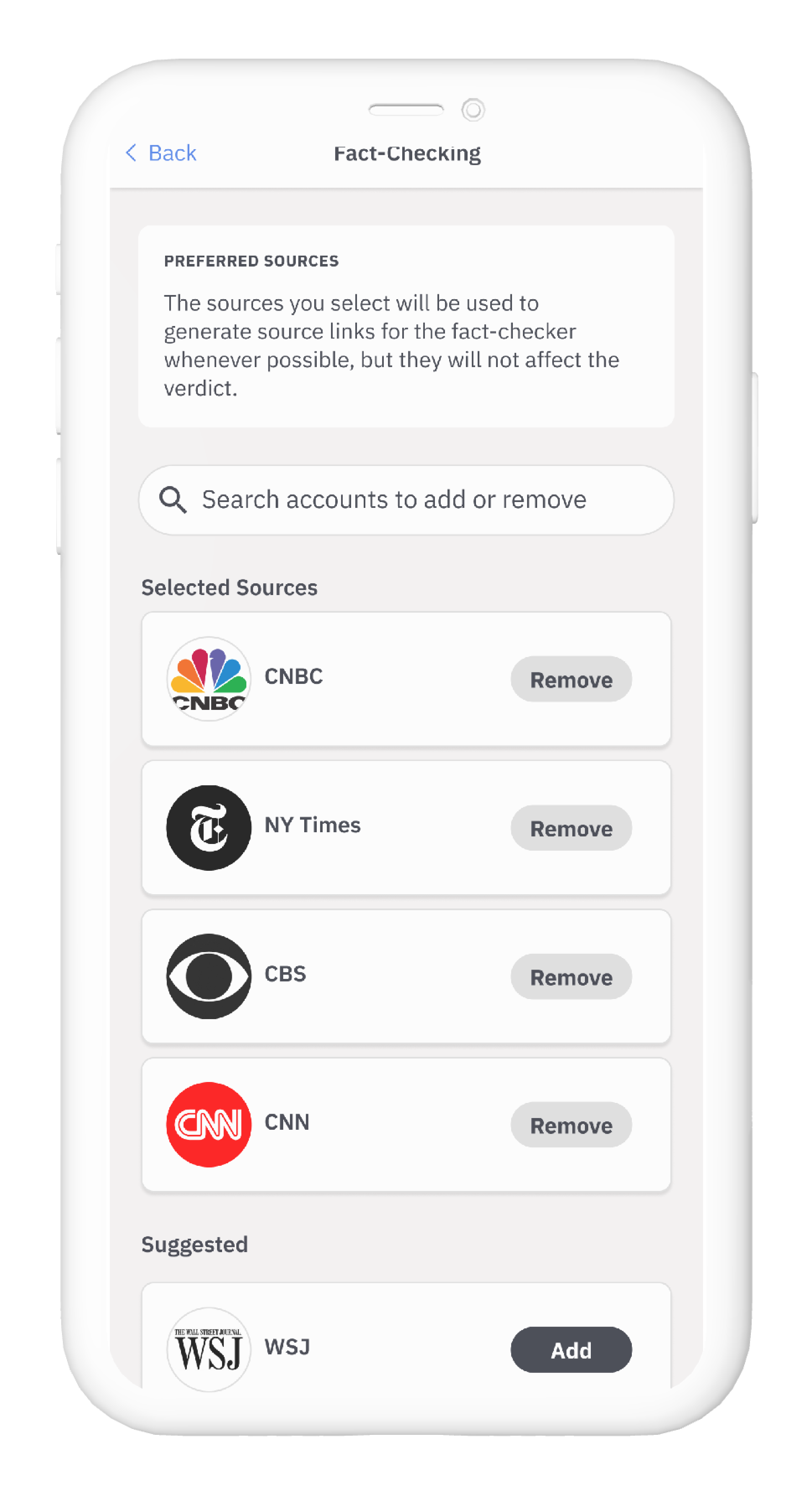
Engagement Hub
The Engagement Hub houses features and user engagement trends that support users in taking action against misinformation.
Corrections
Provides updates on fact-check verdicts to help users keep up with changing information
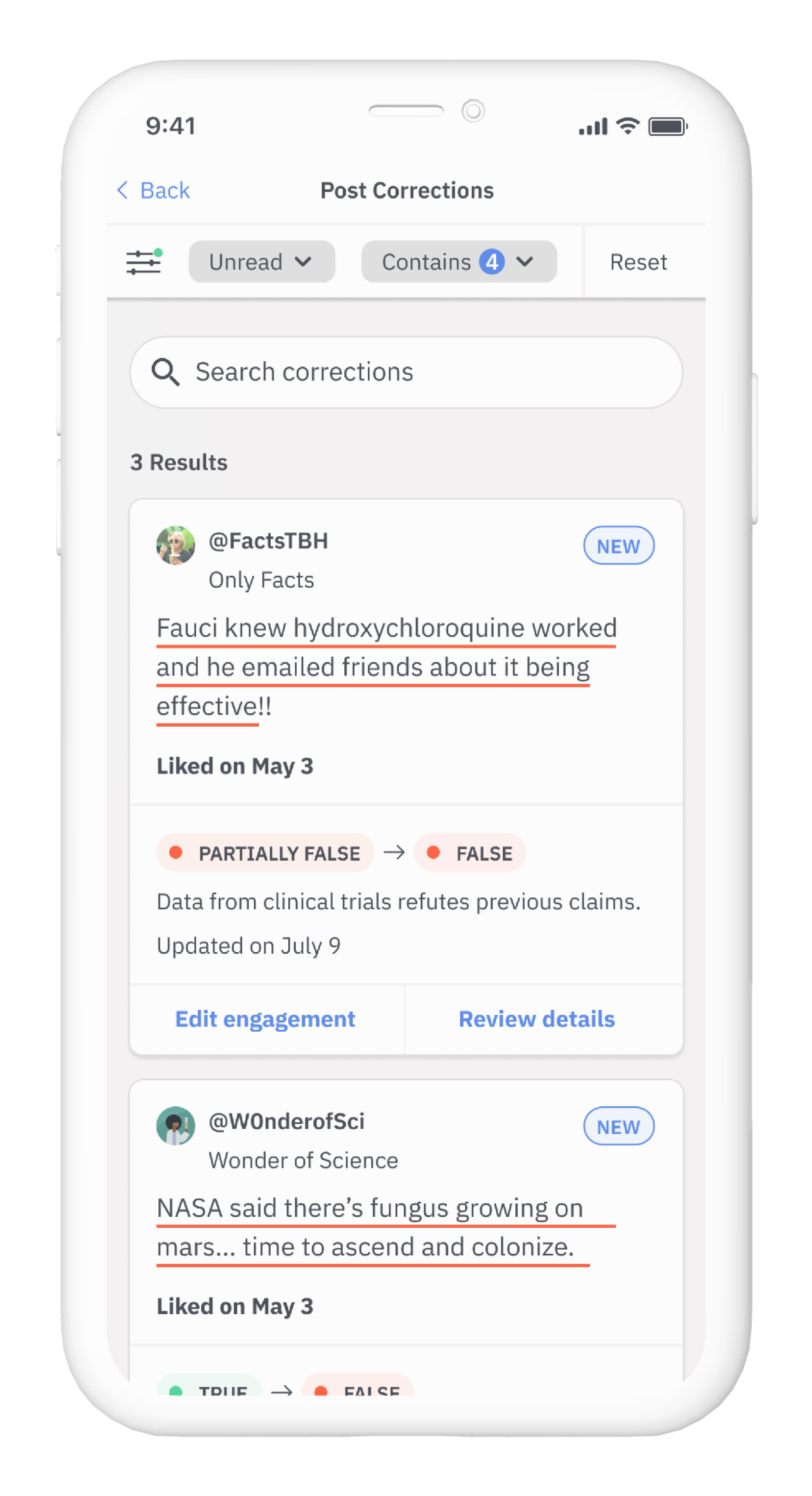
Accounts to Review
Surfaces accounts that post the highest proportion of misinformation in content users have engaged with
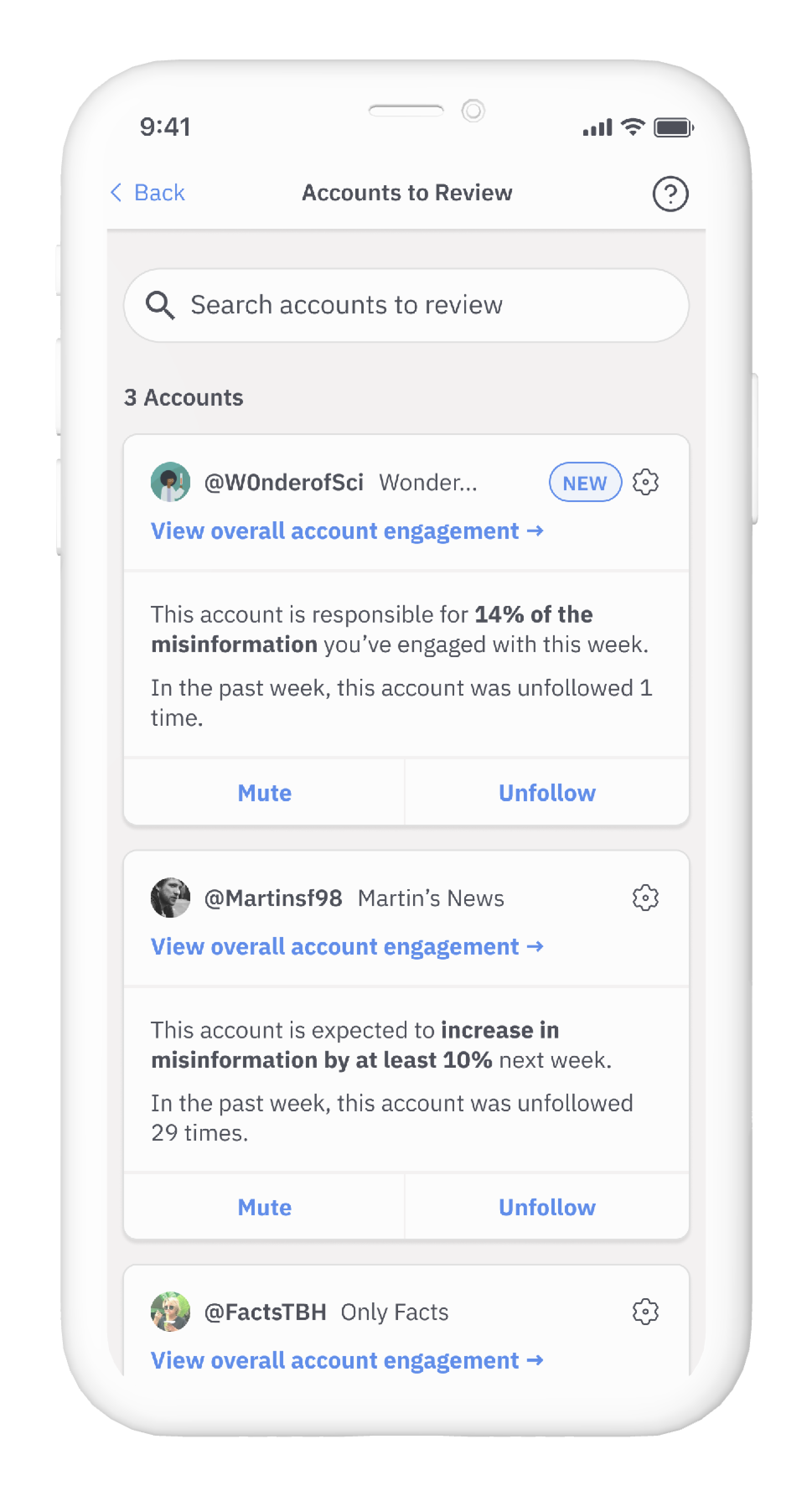
Feed Settings
Gives users options to control the visibility of misinformation in their feeds
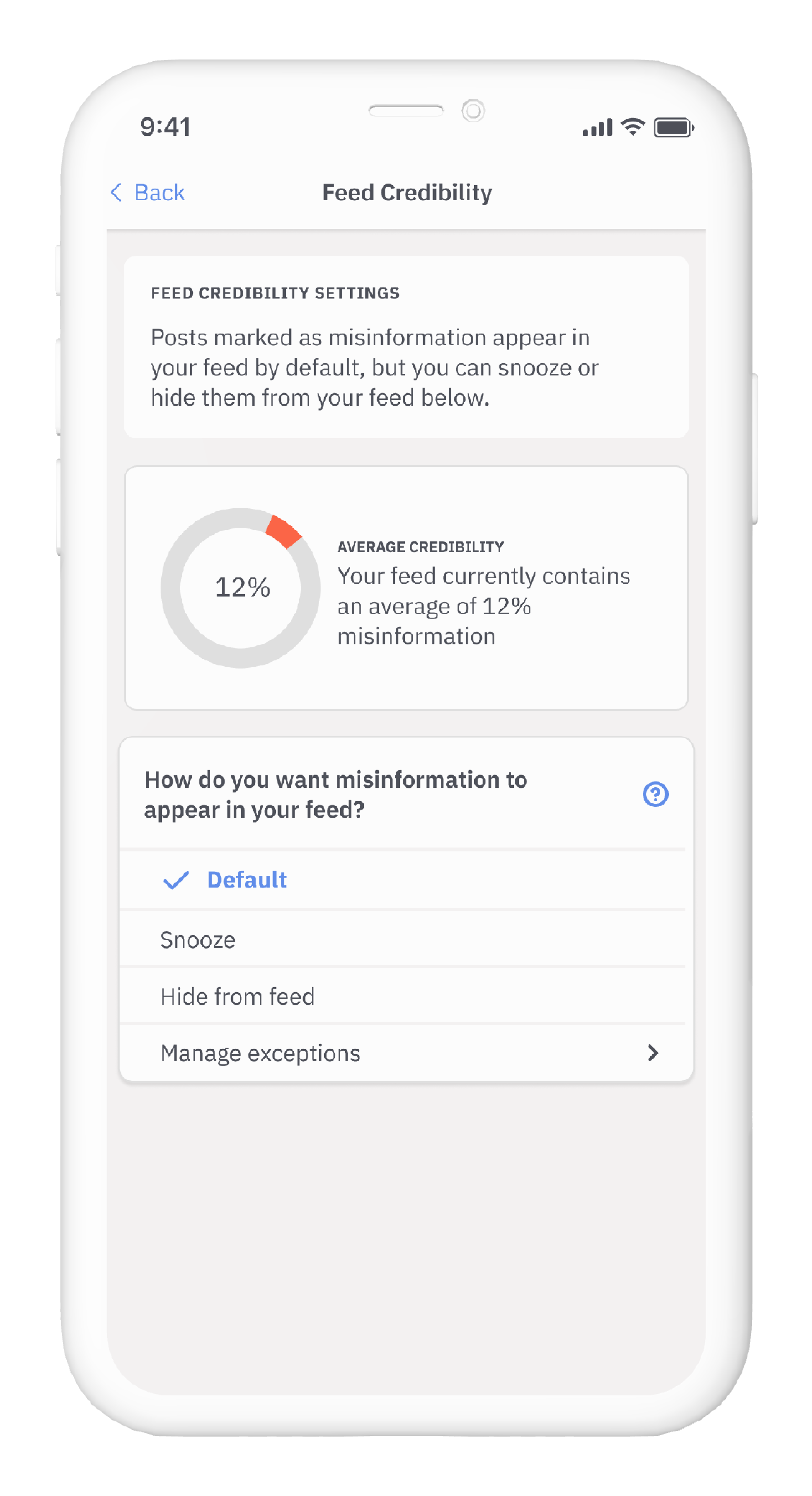
02 Impact
Value for Platforms
Our solution doesn't just empower platform users to combat misinformation. Social platforms will also benefit in the following ways:
Higher Engagement
Increased user confidence in information on the platform can make users more active and engaged
Improve Reputation
Better monitoring of the information circulating on platforms leads to improvements in public image and user trust
Societal Impact
Ultimately, we believe that this solution can bring positive change to not only individual users and platforms, but society as a whole.
Increasing Credibility
Giving people the tools to discern fact from fiction will lead to improvements in people's ability and willingness to evaluate credibility, even outside of the platform.
Reducing harm
Arming everyday people with the ability to discern the truth will lead to fewer people spreading and believing in misinformation, reducing its capacity for causing harm.

One week after testing, we saw a 27% increase in participants who took action against misinformation
Measuring Success
If platforms were to roll out this solution, there are a few ways we'd recommend measuring impact:
Misinformation Levels
The amount of content containing misinformation on the platform should decrease.
User Engagement
The amount of user engagement with misinformation, such as likes, comments and shares, should decrease.
User Satisfaction
User satisfaction in the platform's response to misinformation should increase.

One week after testing, we saw a 12% increase in participants who reported feeling skeptical of information while using social media